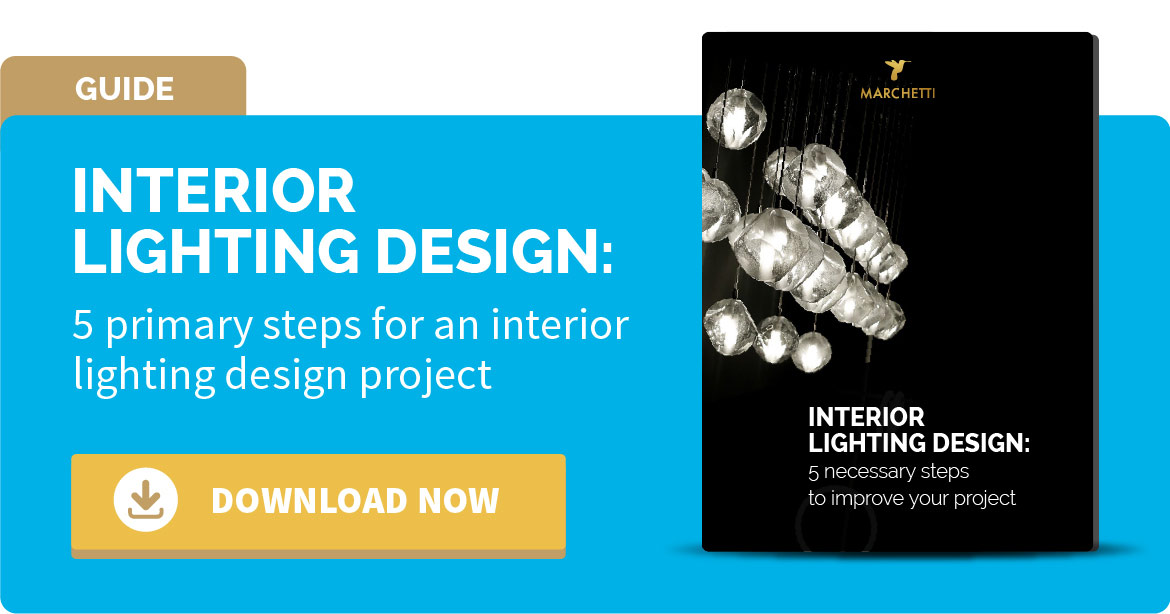Knowing the importance of lighting for an accommodation facility and what are the trends that have imposed themselves most in the sector is essential for approaching a complete hotel lighting project.
Hospitality is a world in constant evolution and, compared to the past, change seems become even faster, so much so that hotels and inns have to continually updating, renewing itself, adapting to the changes taking place.
Knowing how to combine the choice of lighting becomes more and more one of the musts for lighting materials with energy saving, which brings undoubted advantages both in the short term and in the long term: this also involves marketing aspects, which you must not underestimate.
Let’s go now to find out what are the main trends to keep an eye on for one complete design.
- What are the steps to follow to design the lighting of a hotel?
- Hotel lighting: ideas for indoor and outdoor areas
- How to best illuminate a hotel lobby
- What are the most suitable solutions to illuminate the corridors of a hotel?
- What is the optimal lighting for hotel rooms?
- How to give light to a hotel bathroom
- What kind of light to use in the common areas of a hotel?
- How to make the lighting perfect for a hotel bar
- Lights and ad hoc solutions for hotel conference rooms
- The best lights for the relaxation area
- Give light to the SPA and wellness area
- What are the most suitable lamps for showers?
- How to light up the poolside
- How to choose the ideal light sources for the massage room
- Which lamps are most suitable for lighting the outdoor courtyard?
- What is the ideal degree of brightness for the garden?
- Lighting tips for unique hotels
- Original ideas for lighting a modern style hotel
- How to use decorative lighting for an eclectic-style hotel
- Which lamps to choose to illuminate a technological hotel?
- Perfect solutions for lighting an eco-sustainable hotel
What are the steps to follow to design the lighting of a hotel?
A good hotel doesn’t have 5 stars, but it does have to be able to feel the guest at ease like at home, with an enveloping and hospitable atmosphere.
The lighting of the hotel contributes significantly to the guest experience, not both for the function linked to visibility and for the emotions it is able to arouse.
The atmosphere that you need to be able to recreate with the right lights must be welcoming, pleasant and functional, so as to allow guests to find their way around easily and comfortably in every room of the hotel.
- In the hotel lobby, the relationship between the function and the decoration given lighting must be so harmonious as to create an atmosphere that know how to affect the guest’s first impression from the moment they arrive.
The light that welcomes guests is responsible for leaving in them memory a good memory - In the rooms, on the other hand, light must take on a more practical but flexible role. It will be necessary to offer the possibility to adjust it according to your needs. Adopt a lighting system that can adapt to the guest’s needs, it means allowing him to independently and extemporaneously recreate the atmosphere most of his own welcome, dictated by his mood
- If the hotel has a function room, an area for conferences and meetings, it will be very flexible lighting is required to meet different activities carried out in this space.
In these cases, the lighting must be managed through the use of a adequate control system that all personnel can easily maneuver - As for the lighting of the restaurant and the bar area, the lights they play a ecisive role in distinguishing spaces, shaping the atmosphere more appropriate for different environments.
Walkways used by staff, for example, are generally brighter light at the tables or seats. In restaurants it is preferable to use a soft light with a warm hue for dinners, so as to create a relaxing and intimate atmosphere. For breakfast and lunch, however, it is best to integrate with abundant natural lighting or use lighting with brighter and more stimulating shades.
Now let’s see in detail how to illuminate these and all those areas that represent gods additional services offered by the hotel, but which for customers are decisive elements for their choice.

Lighting for hotels: ideas for indoor and outdoor areas
The ideal lighting depends above all on the nature of the hotel, on its own haracteristics and its differential elements.
The positive experience of visitors to a hotel depends primarily on the visual impact, the whose light determines its quality and has a decisive effect on an unconscious level.
A wide range of factors must be taken into account in the design phase: the limitation of glare, the distribution of light bodies, the color of light with the relative color rendering and the correct direction of light.
Using light effectively means accompanying users’ movements at 360 degrees, therefore also working with shadows will help you to create the right contrast: a creative use and emotional light will have a surprisingly positive effect.
Let’s see how to illuminate the various parts that make up a hotel and then analyze the ideal lighting for various types of hotels.
How to best illuminate a hotel lobby
The lobby of a hotel, often considered a place of passage, a simple transit for reaching the rooms or other areas of the structure is actually an important space, as it provides the first impression of the property, makes guests understand where they are, the tone and type of hotel.
The light used must be able to convey exactly the image that the hotel does wants to give to his guests.
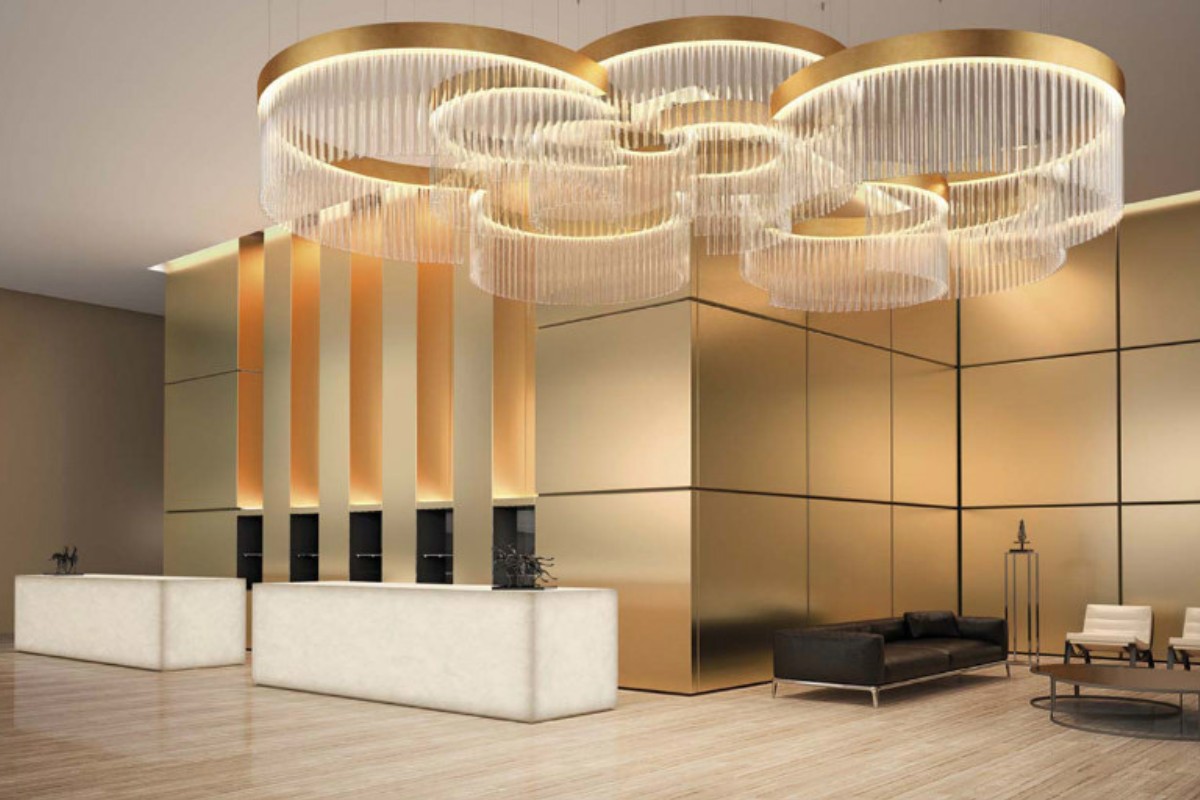
Ice – Sergio Marchetti Collection
Therefore designing proper lighting is essential: depending on the identity of the hotel, you can choose to illuminate the reception desk with a dominant light or using an intimate and welcoming light, with a play of contrasts and warm tones, such as to invite you to lower your voice and respect the intimacy of the place.
The light will guide guests, helping them to easily recognize the reception or the sitting areas where you can store your things; in this case, the atmosphere will be softer.
The light in the hall needs to be balanced between vertical and horizontal lighting: one a certain brilliance of the materials will serve to soften the shadows produced by the luminous bodies go to the reception counter.
What are the best solutions to illuminate the corridors of a hotel?
In the corridors, the light must be functional to identify the path to the rooms, the stairs, or access to elevators, so you have to vary the lighting levels, above all when the corridors are of large lengths.
In these areas, good ceiling and wall light shielding is important: lighting plays a strategic role in making the corridor seem higher or in giving the perception that it is less long.
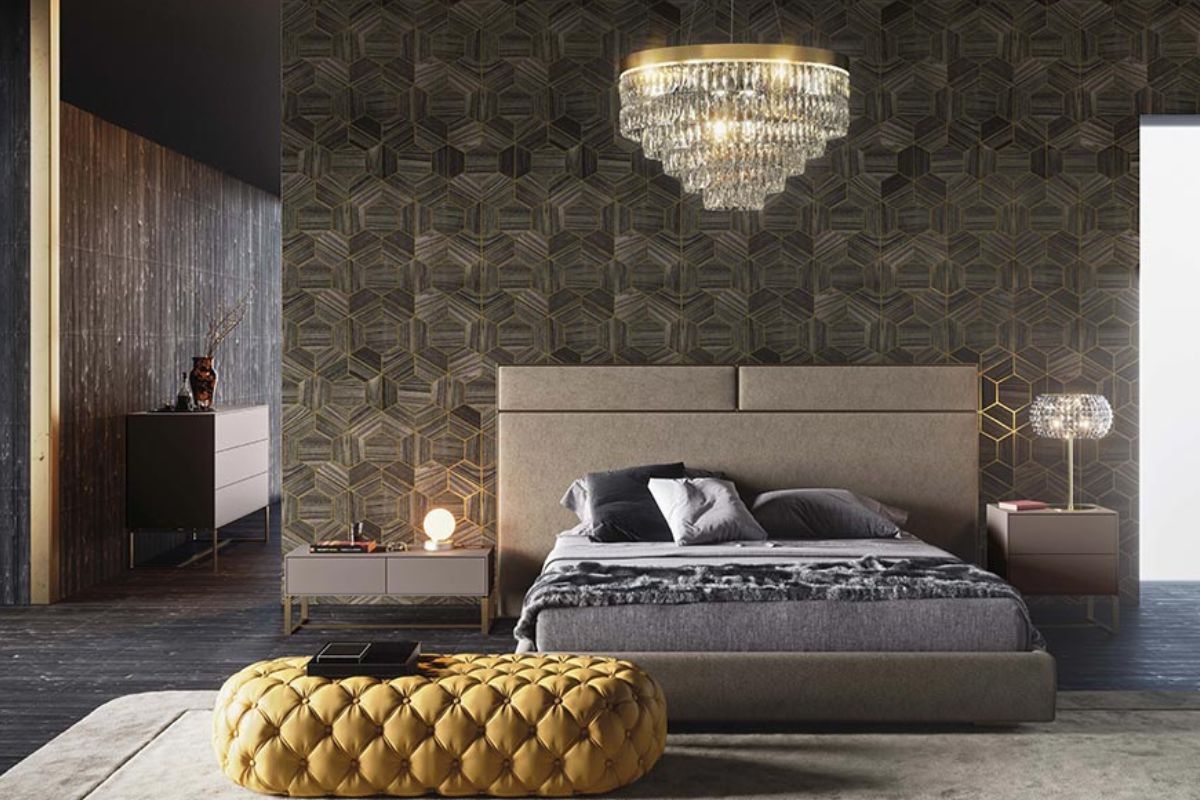
What is the optimal lighting for hotel rooms?
For the lighting of the bedrooms of a hotel, you should consider the fact that each of us perceives light differently.
Therefore, it will be necessary that the appliances can be switched on individually and regulated directly by the guests, so as to facilitate their use. This is because the room is a new and unknown environment for the guest, who must feel at ease. Foresee a control panel at the side of the bed, easily interpretable, will make him feel welcomed.
In order for guests to experience a family atmosphere, it will be necessary to use warm-colored lighting (from 2700 to 3000 K): avoids strong contrasts and glare due to direct or indirect light along the main axes of vision, but look for the right balance between contrasts to create movement and avoid luminous monotony.
As for the bed, you can find your way around a directional light fixture, or on a diffused light applique, so as to facilitate any reading moment.
To expand the space of the room, glass is sometimes used between the bed area and the bathroom: in this way, it is enough to switch on the light in the adjacent room for expand the space, expanding its boundaries.
Sometimes the room even becomes one with the large outdoor terrace: in this case you can illuminate the outdoor space by using plays of light directed on the flooring, also involving bright seats.

How to give light to a hotel bathroom
In the space dedicated to the bathroom, the attention of your lighting project must be directed to mirror.
Good lighting on the sink must be sufficient to illuminate the whole environment, in order to obtain a dressing room effect, given by the emission of diffused light and a direct light component of 20% max.
What kind of light to use in the common areas of a hotel?
In common areas you can create interesting lighting effects by integrating the light to the architecture of the hotel, with customized solutions for the environment.
For very large spaces, we suggest two or more chandeliers with an aesthetic impact, while for more intimate spaces it would be better to opt for suspensions.
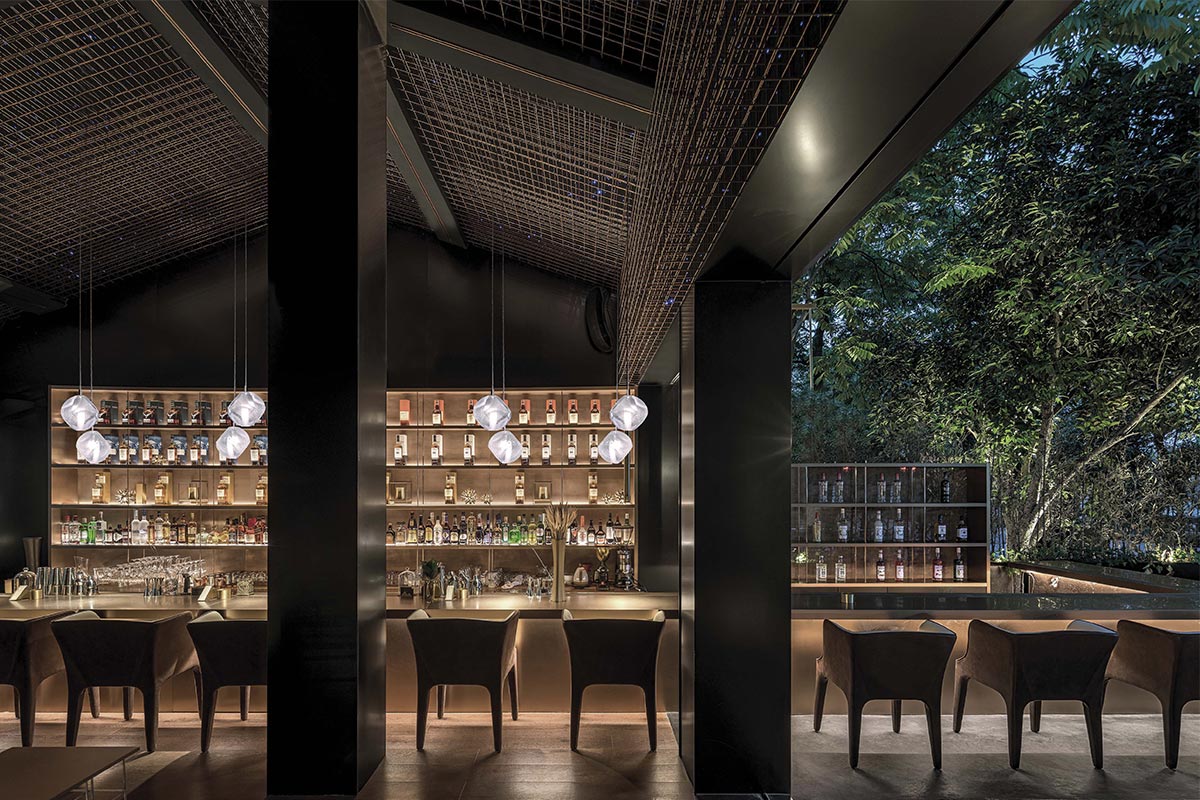
How to make the lighting perfect for a hotel bar
The atmosphere of the bar must be enveloping and relaxing, to offer guests moments of relaxation and giving a relaxed atmosphere. For good color rendering and light control, it is to carefully avoid that the lights can dazzle the customers.
Create a greater variety of visual effects, for example with LED systems color changer, is the winning card if the target to which the hotel is aimed is made up of a younger audience.
Ad hoc lights and solutions for hotel conference rooms
For this common space used for meetings, workshops and formal work events, it is necessary a type of energetic decorative lighting with a sober design, capable of stimulating and not to burden the eyes of those who occupy this area.
In this case, it is possible to opt for appliques to be placed on various points of the walls to give the room a practical and free of excesses aspect.
The best lights for the relaxation area
Let’s start immediately from the corridors: using wall markers oriented towards the low, it will help the customer to orient himself, without dazzling.
Decorative lights inserted in the furniture or veils / shutters on the ceiling, which they leave falling light on the walls, on the other hand, creates an effect that is always soft and indirect.
Lighting plays a fundamental role in the perception of the customer’s experience in the hotel: you need to think of light as the conductor of the relaxation area, in how it directs customers and remains etched in their eyes.
Giving light to the SPA and wellness area
When designing the lighting of a hotel SPA, it is necessary to separate this area from the rest of the structure, as this area requires special attention.
The most common mistake to avoid is to enrich it with too many luminous bodies, by inserting an excessive amount of light, which risks compromising the fundamental result from reach: the relaxation of customers.
In this area it is necessary to focus attention on the quality of light, rather than on quantity.
The environment must be welcoming, comfortable and help the customer feel at home even more comfortable than in other environments, as this is where he wants to feel most relaxed possible.
Guests who enter the relaxation area do not need lighting that let them see far. A few lux (lumens per square meter) are enough for allow people to relax and move around safely at the same time within the whole area.
In the relaxation areas, therefore, it is important that the light is soft and indirect, without any type of glare: lighting between 10 and 20 lux will be sufficient a meet customer needs.
Furthermore, it is good that the light has a warm color temperature, ranging from a minimum of 2700K to a maximum of 3000K.
With the new LED technologies, it is possible to set an adjustable lighting system of which the customer can model both the quantity and the color of the light in a personalized way itself.
What are the most suitable lamps for showers?
In areas reserved for showers, if it is not possible to obtain indirect light with specific lamps, it will be necessary to direct the light sources towards the walls.
This will allow you to create a very suggestive atmosphere, without compromising comfort visual.
You can also use RGB (red, green and blue) colored LED light for the chromotherapy.
In areas reserved for showers, if it is not possible to obtain indirect light with specific lamps, it will be necessary to direct the light sources towards the walls.
This will allow you to create a very suggestive atmosphere, without compromising comfort visual.
You can also use RGB (red, green and blue) colored LED light for the chromotherapy.
How to illuminate the poolside
As for the lighting of the swimming pool, the best solution is at the level the underwater lighting system is both aesthetic and functional.
As with the lighting of the showers, it is also worth choosing LEDs for the swimming pool colored (possibly RGB + W) which offer the possibility of diffusing white when it is necessary.
How to choose the ideal light sources for the massage room
The massage areas must be immersed in indirect or filtered LED lighting, with soft lights, with a very low intensity and above all very hot, since it is important that the customer relax and feel completely at ease.
Also in this area, you can provide for a personalized adjustment of the intensity bright, through dimmers.
In this way, the operator can choose the most suitable atmosphere based on the type of massage, which to the personal needs of the client.
This solution is ideal, because when a massage is in progress, it can be held low light and to clean the room just increase it.
Which lamps are most suitable for lighting the outdoor courtyard?
What is the ideal degree of brightness for the garden?
In the open spaces of the hotel it is also important to enhance the green areas with the right lighting.
In this case, you could create light paths by installing floor lamps, which they will guide and accompany guests on their walks.
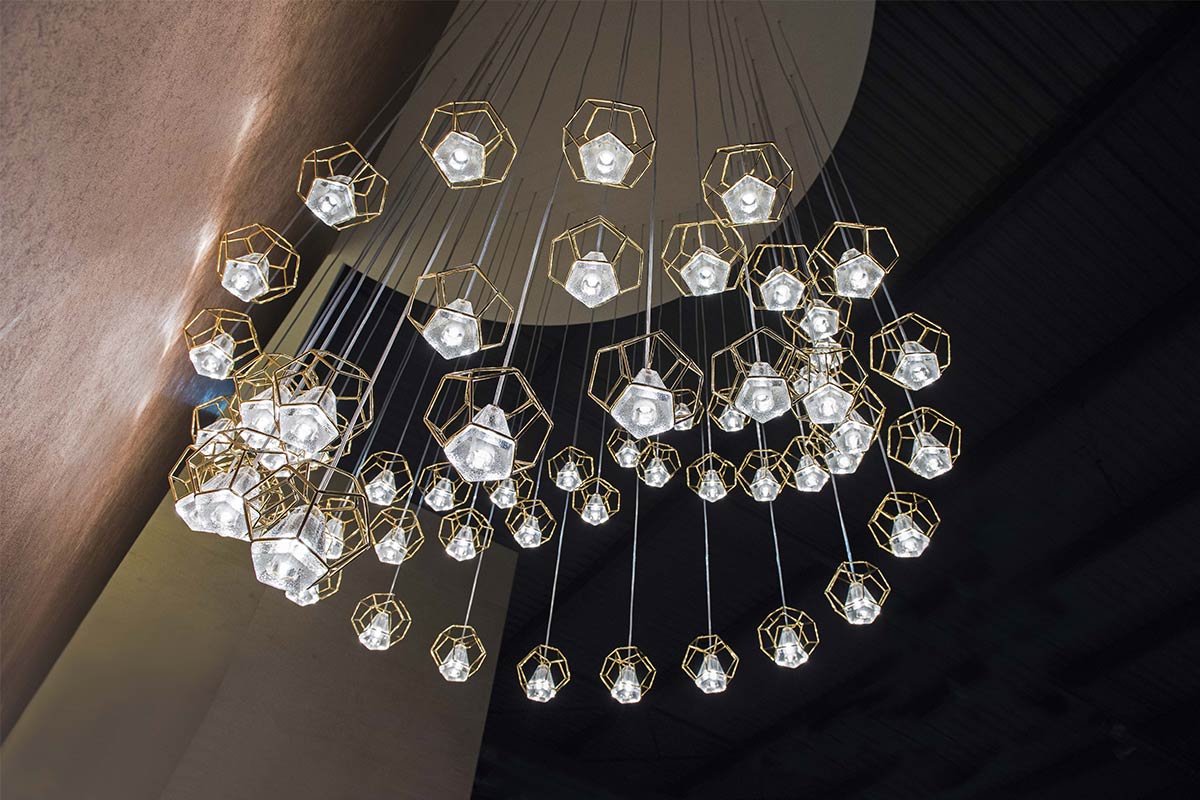
Lighting tips for unique hotels
As the word itself says, an extra-ordinary hotel is the opposite of a standard hotel and the the key word is, without fail, uniqueness.
Extra-ordinary hotels are all those hotels able to offer tourists unique offers and always different, managing to create unusual atmospheres, such as in the Igloo Village Kakslauttanen Arctic Resort in Finland.
Precisely because of the particularities for which they diversify, these hotels need accurate and studied lighting.
The facades and lobbies of large hotels are often comparable to works of art lighting techniques aimed at attracting attention and increasing the power of attraction of the structure, creating a sense of welcome, hospitality and class both outside and inside of.
Being able to create scenographic lighting effects is a must. To get this kind of result you can use decorative light bodies or colored lights positioned in such a way strategic or, again, increase the contrasts to create suggestive atmospheres.
In this way, the aesthetic and functional uniqueness of the hotel can be enhanced and guaranteed also maximum visual and emotional comfort for guests and staff.
Original ideas to illuminate a hotel in a modern style
Nowadays, a hotel is no longer exclusively tourist accommodation, but it can represent spaces aimed at various different activities, such as co-working, workspace, student residence, bookshop, shop, square, meeting point, and so on.
The hotel, therefore, becomes a hybrid space capable of welcoming and combining more functions such as, for example, The Student Hotel, in Florence: a hybrid hotel with a concept innovative, consisting of several common areas designed for both tourists, students and inhabitants.
This type of hotel not only guarantees the classic functions required of a structure receptive, such as eating and sleeping, but creates a multi-tasking structure by opening the doors to retail spaces and bookshops, as well as breweries and themed shops. This means hiring one more commercial connotation and very different from that of the traditional hotel.
In designing environments and light, more and more designers are inspired by settings strictly typical of hotels: many ideas are borrowed from other types of locations, such as theaters and art galleries, or resort to a skilful mix of various settings, in order to create an even more engaging setting.

How to use decorative lighting for an eclectic hotel
When a hotel is able to tell a story, it can immerse its guests in stories and live experiences that are always unique and emotionally engaging.
The stories that a hotel can tell are those related to the place, to the owners of the hotel accommodation facility, or stories designed specifically for the type of clientele you want attract as happens for the Hotel Indigo in Rome.
Here the beauties of the city enter the rooms and other spaces of the hotel, such as the restaurant and gym: the great photographic images create the storytelling, through which guests can take a journey through the place, the history and the charm of the city, directly on the walls of the hotel.
To enhance the style, the lighting must be very characteristic and must donate uniqueness and particularity to the environment.
A clear generic light, but not too intense, and the use of accent lights that are able to involve guests, draw attention to the narrative thread of the story with a use wise and strategic of the play between light and shadow.
An always valid solution to opt for is to allow a certain margin of light variability, so that guests can adjust the levels and lights to their liking lighting mode.
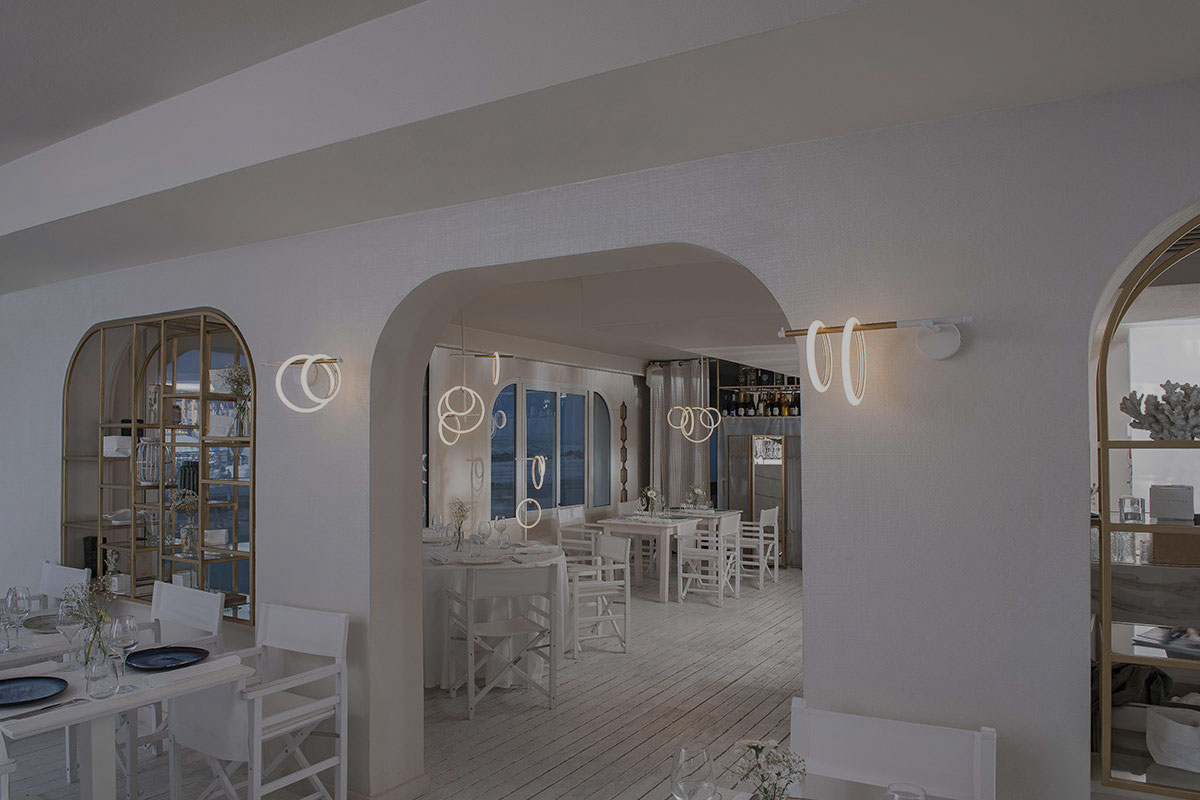
Which lamps to choose to illuminate a technological hotel?
Home automation, booking engines and latest generation management software are the tools that every accommodation facility must be able to integrate within it.
To the “digital” guests, increasingly hyper-connected and eager to share their experiences in real time, it will be necessary to be able to offer both the necessary comforts to their digital needs, what content they can capture and share with their own online community.
As an improvement of the customer experience, the smartphone is the key in the sense literal.
There are many solutions that allow a hotel guest to open their room with the phone, through a special app provided by the hotel, and to control the lighting of the bedroom, a solution now provided by many installation manufacturers lighting design and supplemented by many designers, which allows guests to also adjust intensity, color and other lighting effects.
Perfect solutions to illuminate an eco-sustainable hotel
Eco-sustainable solutions often lead to considerable energy savings: due to the characteristics of the accommodation facilities, the consumption of electricity forr lighting is one of the most expensive items.
For this reason, one of the trends that has stood out most in modern design of hotels, it is precisely the presence of daylight sensors, which adapt to the variation of the external light by adjusting the intensity of the internal lighting accordingly, in combination with room occupancy sensors.
Being able to turn the light on and off automatically depending on the occupied environments, and adjust the intensity of the light beam based on natural light, makes these sensors extremely functional tools for energy saving: optimal solution both for respect for the environment and for the economy of the hotel.
Having seen that lighting appears to be the voice that affects the most total electricity expenditure of a hotel, it is convenient to invest in technologies that reduce unnecessary consumption.
A good example is to make sure the lights are off when no one is in room, or avoid excessive lighting level when natural light arises enough.
In addition to the two types of sensors just viewed, there are more on the market technologies and automatisms able to bring a real advantage to limit consumption energetic.
There is also the possibility of adopting monitoring tools that keep track of consumption deriving from the different sources, allowing, subsequently, to analyze and optimize the overall consumption of electricity.

Ulaop Leather – Sergio Marchetti Collection
Lighting for hotels: how to make a design complete
As we have seen, hotel guests expect to receive a good welcome, to relax in the common areas, to have a comfortable and technological room and to be able to use practical and functional work environments.
Your hotel lighting project must ensure the right light in each of the environments to offer the customer a positive experience that motivates him to return.
You can choose LED lights, which allow you to create different atmospheres capable of indulge all the emotional nuances and customize the various environments in a way dynamic.
Furthermore, they lead to a significant reduction in energy consumption, both by their nature, both because they allow you to adjust the intensity of the lighting at various times of the day, always offering an optimal ratio between artificial light and natural light.
The hotel presents itself gradually to the eyes of the customer, who follows a path that follows him gradually leads you to discover the various environments.
In the reception you get a first impression on the hospitality and style of the hotel, therefore the general lighting of the hall must make the reception point recognizable and intuitively outline access to rooms and common areas.
In the corridors, the lighting must be harmonized with the geometry, in fact it can make it seem more high the ceiling, counteract the tunnel effect and make the path more dynamic through the use of horizontal cuts of light that modify the perception of length.
The vertical lighting facilitates the recognition of people and the backlit panels make it easy to recognize the room number.
In the room, the lighting must support the various functions that it normally does plays the guest, such as reading, watching TV, accessing the internet, relaxing, and so on.
To make this possible, it is optimal to use a single command multifunction easily interpretable, so that he can adjust and get it right light level at all times.
We have also seen that the most innovative hotels provide special apps that allow, via smartphone, to open the room and to regulate all electrical services, such as the air conditioning, the intensity and color of the light, the shutters, etc.
In the bathroom, mirror lighting plays a very important role, because it offers the ability to identify every detail well.
In the common areas, the lights must integrate with the architecture and furnishings. How long concerns the relaxation area and the massage area, you must know how to illuminate spaces using sources light with a soft beam and a warm tone, in order to allow guests the maximum level of relaxation, given above all by the sensation of feeling completely a at ease.
The keywords in the complete design of hotel lighting are:
- Diversification
- Digitization
- Style
- Multitasking
Obviously, without ever neglecting comfort, which must be the must element of all accommodation.
In order for the hotel you are planning to become the first choice of customers, you must be able to structure a concept of internal and external light with a unique and functional design for each part of which the hotel is made up.
What remains etched in the guests’ memories is the lighting, because it is the light itself the element capable of deciding the perceptive experience of customers, a fundamental factor for their evaluation of the stay in the hotel.
Outline the concept of the structure and customize it with such imaginative lighting as appropriate, choosing solutions to meet every kind of need: this will result in such a pleasant experience for guests that it will motivate them to come back.
Always keep in mind that each area of the hotel needs specific lighting and functional to the activities to which it has been designated.
Choose luminous bodies to best define the character of the hotel on the outside, and then concentrate on maintaining that stylistic line in each of the interior areas, including the bedrooms.
You can opt for different lamps to integrate in order to create plays of light eye-catching, in order to make the spaces as less static as possible, except for obviously, of the relaxation area.
Since this is the area used for relaxation, the choice of soft lighting and non-dynamic will give guests feelings of tranquility and quiet and will facilitate their more complete relaxation.
That said, if you follow this complete design guide, hotel lighting will help you it will be much simpler: remember the keywords that recall the various ones features we have observed in this article to create a project how much as meticulous as possible.
The innovative trends that differentiate the various hotels are decisive for the type of lighting that you will have to foresee, as it will be the light that enhances the concept diversification of hotels. In this sense, therefore, to understand what kind of hotel it is, what are its characteristic elements and what kind of clientele it intends to communicate to essential for you to create a specific project capable of marrying the vision of your client.
To be able to create a complete project, therefore, you will have to combine in a way strategic all the points seen so far, finding the most suitable way to integrate all features that are sure to make your hotel lighting project a real one success in all its parts, which will result in the success of the accommodation for you commissioned.

